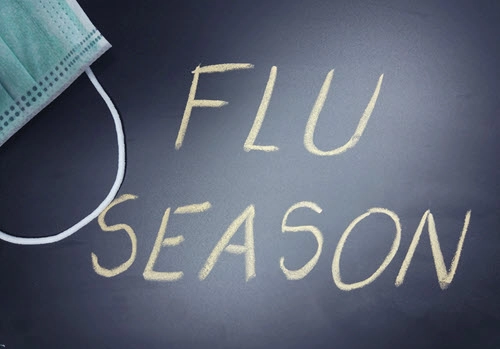Pediatric Coding Alert
Use This Guide for Flawless Flu Coding
And clip-and-save this handy chart to code current vaccines.
In October, the Centers for Disease Control and Prevention (CDC) warned that “because of the COVID-19 pandemic, reducing the spread of respiratory illnesses, like flu, this fall and winter is more important than ever.” And while the CDC recommends everyone receive the flu vaccine in September or October, “getting vaccinated anytime during the flu season” will help (Source: www.cdc.gov/flu/season/index.html).
This is especially true for high-risk patients like infants and young children. So, here are some suggestions, along with some expert advice, to help you keep your flu vaccination coding straight now the season is moving into high gear.

Know Your Toxoid Choices for 2020/2021
First, you’ll need to select the correct CPT® toxoid code to match the flu vaccine your pediatrician administered using the clip-and-save chart on page 4.
And Don’t Forget to Boost Your Bottom Line
Next, you’ll need to make sure you have aligned your immunizations with the appropriate administration code. For each toxoid you bill when your pediatrician

does not counsel the patient, always make sure you bill a corresponding administration code, such as 90473 (Immunization administration by intranasal or oral route; 1 vaccine (single or combination vaccine/toxoid) when billing 90672 or 90471 (Immunization administration (includes percutaneous, intradermal, subcutaneous, or intramuscular injections); 1 vaccine (single or combination vaccine/toxoid)) for all other flu toxoids.
This also means “making sure you are documenting and receiving full payment for immunization counseling,” advises Barbara Hays, CPC, CPCO, CPMA, CRC, CPC-I, CEMC, CFPC, medical review supervisor, Special Investigations, GEHA in Lee’s Summit, Missouri. In other words, it means billing 90460 (Immunization administration through 18 years of age via any route of administration, with counseling by physician or other qualified health care professional; first or only component of each vaccine or toxoid administered) along with the appropriate toxoid code when your pediatrician counsels a patient under the age of 18 (or the patient’s guardian) on the vaccine.
Know Your Testing Options
Of course, some of your patients may get the flu with or without a flu shot, so you will need to have the flu testing codes at your fingertips as well. Typically, in an office setting, that means using 87804 (Infectious agent antigen detection by immunoassay with direct optical (ie, visual) observation; Influenza), which is a simple test “that the provider can interpret visually via a mechanism such as development of a colored band,” according to Melanie Witt, RN, CPC, MA, an independent coding expert based in Guadalupita, New Mexico.
Modifier alert: Medicare and payers following Medicare guidelines require modifier QW (CLIA waived test) to be appended to 87804 as it is a Clinical Laboratory Improvement Amendments (CLIA)-waived test. And, should your pediatrician order tests for both A and B flu strains, you may “use modifier 59 [Distinct Procedural Service] when separate results are reported for different species or strains that are described by the same code” per CPT® guidelines.
Pediatric Coding Alert
- Year in Review:
Look Back to Move Forward: 4 Stories From 2020 to Watch in 2021
Hint: Keep your eyes on the 2021 PFS. Preparing for major changes to office or [...] - Procedure Coding:
Use This Guide for Flawless Flu Coding
And clip-and-save this handy chart to code current vaccines. In October, the Centers for Disease [...] - Guidelines:
Want to Code Well, Sick Visits Together? This FAQ Will Help
Ask, “is the problem significant or trivial?” Preventive visits that uncover a serious, significant condition [...] - You Be the Coder:
Pay Attention to External Cause Guidelines in This Reduction Encounter
Question: One of our pediatricians recently performed a reduction of a traumatic fracture in our [...] - Reader Questions:
Establish These Rules for New Patient Encounters
Question: Can we bill 99201-99205 for a patient who comes in to establish care with [...] - Reader Questions:
Test Your Understanding of the 2021 MDM Guidelines
Question: The 2021 office and outpatient evaluation and management (E/M) guidelines for medical decision making [...] - Reader Questions:
Resolve Double Dx Dilemmas With This Excludes1 Guidance
Question: In the You Be the Coder article “Don’t Exclude This Advice from Your Dx [...]

